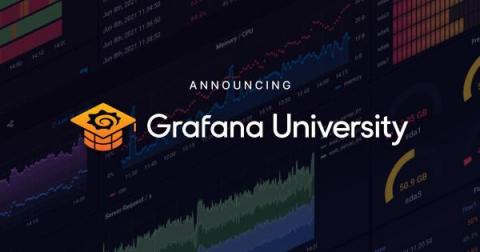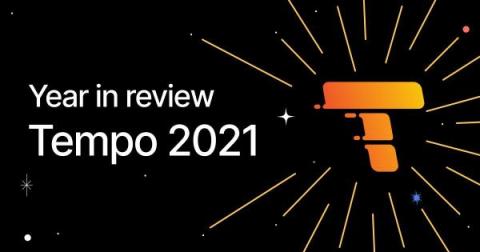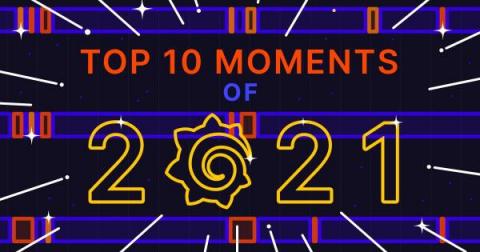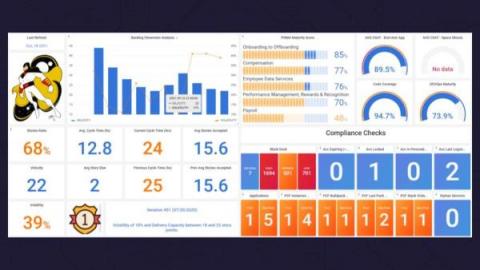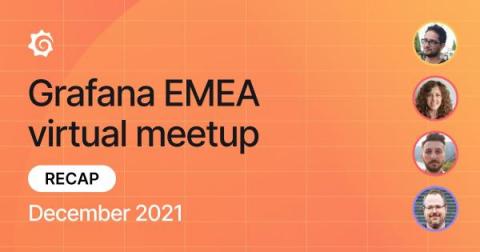Operations | Monitoring | ITSM | DevOps | Cloud
Grafana
How the new k6 Cloud app plugin makes it easy to correlate QA data and system metrics in Grafana
One of the common challenges when doing performance testing is the difficulty of correlating the metrics of your application with your testing results. Having available QA, infrastructure, and application metrics together allows engineering teams to better understand the behavior of their systems during the testing, helping to detect and prevent potential issues in their applications.
Five tricks for logging at scale in a Kubernetes environment with Grafana Loki
Legacy logging solutions simply couldn’t keep up with the complex, hyperconverged regional infrastructure at Civo, a Kubernetes service provider that enables users to launch k8s clusters within 90 seconds. “With our infrastructure and application deployment getting more complex and more distributed, we needed our logging solution and our entire observability stack to scale up with our needs,” said Anaïs Urlichs, Site Reliability Engineer at Civo.
Introducing Grafana University: our virtual hands-on education platform that's free and easy to use
Grafana Labs has had a long commitment to educating our customers and community about all of our open source technologies and products, with our community Slack, webinars, conferences, documentation, and of course, this blog. In 2021, we decided that it was time to create a formal education program to provide more structured, repeatable, and scalable learning experiences – all while providing the same compelling and quality content our community is accustomed to.
Grafana Tempo 2021: Year in review
Grafana Tempo has had quite a year. Just eight months after it was announced at ObservabilityCON 2020, the open source tracing solution went GA. Since the Tempo team released v1.0 in June, we have ingested more than 39 trillion spans, a 26x increase from last year. We also introduced Grafana Enterprise Traces, which is powered by Tempo, to the Grafana Enterprise Stack.
Grafana Loki 2021: Year in review
This year, we were excited to deliver the easiest version of Grafana Loki to use yet. With Loki 2.4, the Loki team introduced a simple, scalable deployment, and over the past 12 months, we added lots of great new features. Not to mention, we launched Grafana Enterprise Logs, a new addition to the Grafana Enterprise Stack that’s powered by Loki. But none of this would have been possible without our active community: In 2021, Loki had 166 contributors and 823 PRs in GItHub.
Grafana 2021: Year in review
Numbers don’t lie — and the data shows that in a year in which we, once again, endured unpredictable changes, Grafana experienced unparalleled success. In June, we introduced Grafana 8.0, which included unified alerting, new visualizations, real-time streaming, and more. Since then we have introduced a host of new features as well as new data source plugins that only reinforce Grafana’s commitment to our “big tent” philosophy.
Grafana Labs in 2021: Top 10 moments of the year
Here’s a look back at the releases, products, community stories, and major announcements that defined another incredible year for Grafana Labs.
How product teams can manage their performance using Grafana, Prometheus, and Oracle metrics
Ever known a project manager who thinks a task takes minutes when it really takes hours? One company has developed a helpful monitoring tool that not only helps project managers make more realistic estimates, but also helps product teams save time, increase efficiency, and improve their overall performance. At ObservabilityCON 2020, Walter Ritzel Paixão Côrtes, a product designer at Dell, gave a presentation about a data-driven solution his team developed called Product Team Observability.
Grafana EMEA meetup recap: shift left observability, AI and load testing, monitoring plants, and more
On Dec. 8, we gathered the Grafana EMEA community for another dynamic meetup. Experts from the Grafana Labs and k6 teams alongside observability pros from different organizations covered topics ranging from shift left observability practices to monitoring your green thumb at home with Grafana. In case you missed the virtual get together, here’s a recap of each talk along with the session videos.





